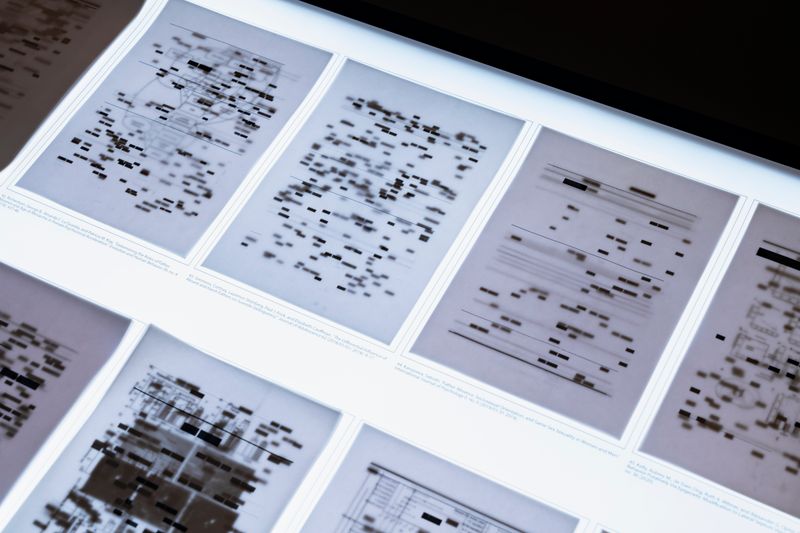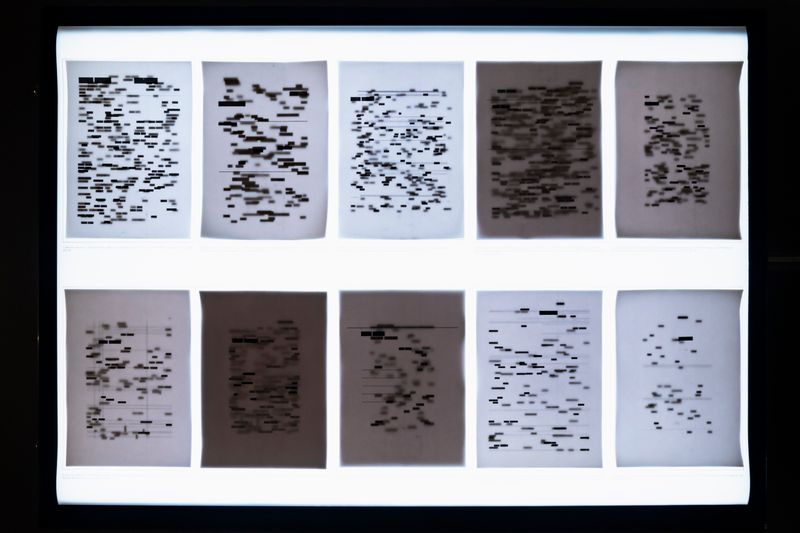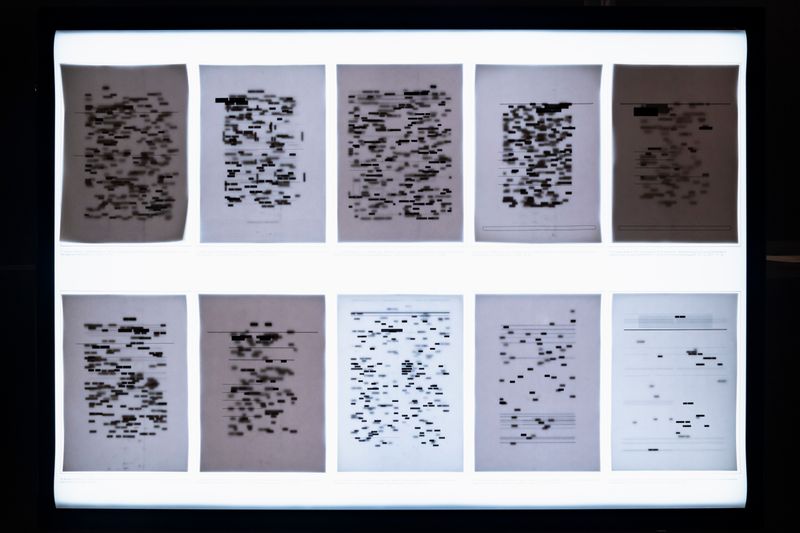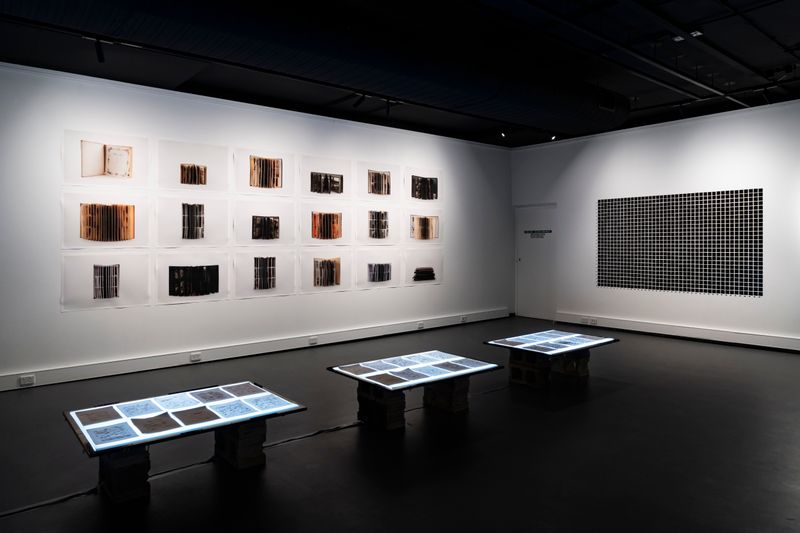The echo you can see
-
Dates2016 - Ongoing
-
Author
-
Shortlisted
Part collection, part curation, part critique; The Echo You Can See confronts the mythic thrall of the image of family in Western culture.
Brief artist statement:
We all have families in some form or another. Maybe it’s the family you were born into, maybe it’s the family you’ve created with a significant other, or maybe it’s the family you’ve curated with people you’ve chosen as your family. Every person’s conception of family is unique. Individual relationships, circumstances, beliefs, choices, luck, mistakes, abilities, perceptions, commitments, stigmas, and expectations feed into the intricate web of experiences and connections we refer to as ‘family’. In a world where the concept of family is as diverse as the individuals who constitute it, the deeply ingrained ideal of the traditional nuclear family somehow continues to exert its influence on public discourse and scholarly inquiry.
This body of work sits in the the tense intersection between one lived reality of family, and the dominant norm of family within western rhetoric. Originally presented as an exhibition containing multiple visual experiments, The echo you can see comprises of seven works which approach the concept of the family from different locations – within commercial or public domain, within private and within academia. The tangled history of photography and the nuclear family is re-considered as both a force of social change and the origin of aesthetic conventions which still define how the family is represented.
Textbook exposes the formula of the 'happy family' as it was sold to the consumer with the help of photography in the mid-century.
The sheer quantity of family images that saturates our lived experience is tackled in the paired works the particular grid of a system of knowledge and Index which work through the challenge of creating new knowledge in an already oversaturated visual landscape and attempts to visually quantify the homogeneity and ubiquity of public images of family.
The task of transparently sharing my subjective experience of family is confronted through the work My Family (most stubborn bitch I’ve ever met) which provides an opposition to the excess of familial images presented within the particular grid of a system of knowledge and Index.
Viewers are reminded of their own subjective experience of family through the work Family Album.
The found text and image works [are you] Projecting and The Normality of the Patriarch re-tool the existing language mechanisms and connotations of found texts, working through the power inherent in their original context (scholarship, advertising, mass media, pop culture) and their embedded mythic speech.
Stolen from a mid-century Kodak advertisement, the title phrase "the echo you can see" succinctly illustrates the nature of this dominant notion of family; distorted more with every reverberation—it obscures and mollifies the real complexity of our familial experiences.
Below are the material details and didactics for each of the works. The image files are captioned to correlate with the work titles listed below.
Textbook * (2023)
Photographic print on repositionable textile
1300x990cm
Textbook combines two images featured in different editions of the textbook Diversity in Families. These formulaic and generic images selling family informed how everyday people chose to photograph their own families at home and modelled the tropes of family representation we still see today in the Western world.
*image of work included as cover image
My Family (most stubborn bitch I’ve ever met) (2023)
Direct to paper negative on long expired paper inherited from a distant relative, made on a camera given to me by one of my closest friends, presented in a frame hand-made by another good friend.
4x5in print in 11x12in frame
While a photograph does not restore the past, in the sentimental context of the family album it does affirm that the past existed. A Photograph cannot be re-lived, it is not a resurrection of a moment, or of the pictured person. This untouchable past is meaningful only to those who remember it. Without the context of living memory to testify to the significance of the moments and people captured a photograph is just another indifferent object.
This photograph is a sentimental collaboration made with my immediate family - my mother, Julianne. My father was never present in my life, my grandparents who helped raise me have now passed away and I am an only child.
My Family is a complex and layered image, much like all familial realities. Many of the facets that make this photograph precious to me are wound up in its materiality as an object. Made on a 3D printed 4x5 camera which was gifted to me by one of my closest friends, on a photo paper that I inherited from a distant relative, presented in a frame hand-made by a friend, this work contains sentimentality and significance which is not evident in the image to anyone by me. My Family does not fit to the accepted tropes of family images, instead referencing the formulaic language of early anthropological photography. Silvered, obscured with damage and chemical degradation, and literally negative, this solitary portrait of my mother, is both an intimate, personal collaboration and a defiance of expected norms, not just of family photographs, but of family in general. The image is not a reproduction or a copy, but the original negative image… a play of language which mirrors the negative images of single mothers which still pervade discourse.
The subtitle of the work, (most stubborn bitch I’ve ever met) was a hilarious gift given to me in one of the few conversations I’ve had with my father. Delivered with a sentiment somewhere between frustration and respect, this description of my mother has become a sort of hereditary badge of honour within our family lineage. My mother, Grandmother and I had a running joke that heritable stubbornness was our most pervasive trait, and to hear it from my father, a complete outsider to our family dynamic, was oddly affirming. The statement, most stubborn bitch I’ve ever met, became a sort of soothing shared identity between three generations of otherwise different women.
Family Albums (2023)
18 rag matte photographic prints.
875x600mm
"Most family albums are a form of propaganda, where the family looks perfect, and everyone is smiling." –Martin Parr
The materiality of family images and the rituals that dictate how they are made, stored, interacted with and curated has changed enormously since the advent of the internet. The quick uptake of social media and fervent sharing of personal images has meant that our ability to project our familial narratives and ideals has a broader audience than ever before. The family album is no longer experienced tenderly by our nearest and dearest in the relative privacy of our homes but is broadcast to strangers on the internet, raising the stakes of our performances of family and manifesting new anxieties.
Family albums are designed to be touched. Held in your hands, rifled through, reminisced over by people who treasure them. These family albums deny the viewer this privilege. Instead, you can only peek into their pages to catch snippets and glances of lives lived. Partially open to the viewer but not accessible, these photographs tease at our desire to hold and peruse the albums they depict whilst allowing them to remain private.
the particular grid of a system of knowledge (2023
1050 squares of exposed and developed black and white photographic paper, embossed labels
5x5cm squares in 25x42 grid.
"Do we even need to be producing these images anymore? Do we need to be looking at them? We have enough of an image archive within our heads to be able to conjure up a representation of any manner of pleasure or horror. Does the photographic image even have a role to play anymore?" – Broomberg and Chanarin
The internet furnishes our lives with an unavoidable wallpaper of consumer culture—the homogenous, mass-produced, visual backdrop to which popular culture and contemporary marketing conform. These are images we do not usually actively notice, instead we read and consume them as unthinkingly within the fabric of our everyday lives. Images of family are part of the fabric of this wallpaper of ubiquitous visual culture, ‘stock’ representations of family which are deployed as illustrations in all manner of discursive locations. Google does not shape our attention but is shaped by what we want to find, and as such it reveals the taste of the public which engages with it. As such, Google results could be considered a mirror for the tastes, values, sentiments, and curiosities of the mass public—or at the very least, what continues to be sold to the mass public in reflection of their assumed tastes, values, sentiments and curiosities.
The particular grid of a system of knowledge consists of 1050 squares of overexposed photographic material, displayed in a 25x42 grid. Each column correlates to a Google Images search term drawn from the language of academic family studies:
Adopted Family, Alternative Family, Australian Family, Blended Family, Broken Home, Conjugal Family, Divorced Family, Dysfunctional Family, Extended Family, Family, Family Man, Family Values, Father, Fatherless, Fictional Family, Foster Family, Gay Family, Gay Parents, Grandparent Family, Happy Family, Hollywood Family, Intact Family, Lesbian Parents, Matriarchal Family, Modern Family, Mother, Multi-generational Family, Normal Family, Nuclear Family, Patriarchal Family, Political Family, Same-Sex Parents, Separated Family, Single Father, Single Mother, Single Parent, Standard Family, Step Family, The Family, TV Family, Typical Family and Unhappy Family.
The first 25 images from each search are recorded within the accompanying work Index with image to text description of each image is provided in the Receipts to the right of the grid. Receipts collates the linguistic description of each of the 1050 images, as generated by an open AI image-text reader. The idiosyncrasies of the AI reveal the biases which have informed its intelligence, with it often failing to recognise families outside of the most normative representations.
Index (2023)
1050 individual laser prints, 4 ring binders, 42 page-dividers, embossed labels.
The internet furnishes our lives with an unavoidable wallpaper of consumer culture—the homogenous, mass-produced, visual backdrop to which popular culture and contemporary marketing conform. These are images we do not usually actively notice, instead we read and consume them as unthinkingly within the fabric of our everyday lives. Images of family are part of the fabric of this wallpaper of ubiquitous visual culture, ‘stock’ representations of family which are deployed as illustrations in all manner of discursive locations. Google does not shape our attention but is shaped by what we want to find, and as such it reveals the taste of the public which engages with it. As such, Google results could be considered a mirror for the tastes, values, sentiments, and curiosities of the mass public—or at the very least, what continues to be sold to the mass public in reflection of their assumed tastes, values, sentiments and curiosities.
Consisting of 42 individual Google image searches restricted to the location of Australia and the image type of ‘photograph’, this Index compiles the familial wallpaper of our everyday lives. The webpage heading, image, image to text description (generated by open AI huggingface) and the web address where the image appeared. This imperfect archive reflects the sameness of commercial representations of family, the languages both visual and linguistic which accompany certain family forms, and the nuance and complexity of family which these depictions fail to illustrate.
[are you] Projecting (2023)
80 slides of Ilford HP5+ Black and White film, slide mounts, projector.
Images and text sourced from academic journals, news headlines, internet memes, textbooks, family counselling handbooks, anthropology dictionaries, census data, Google searches, political speeches and advertising are re-imaged and reduced to the analogue simplicity of positive|negative.
Divorced from their original sources and deviously reordered, authoritative texts begin to loose their seriousness when intermingled with pop culture.
The Normality of the Patriarch (2023)
50 x A4 redacted and blanked academic papers on tracing paper, commercial lightboxes, matte backlit paper
Mothering requires the physical presence of the mother, whereas paternal power can be manifested through absence." - Deborah Chambers
The Normality of the Patriarch is an experiment in making transparent the patriarchal bias inherent in much of family studies scholarship. Consisting of 50 scholarly articles that problematise single-mother families, this work embraces the oversimplification and dichotomising which is rife within familial discourse to reduce the papers to their simplest coded form.
Each unique paper was searched for a selection of terms (“father”, “father-absent”, “absence”, “paternal”, “dad”, “fatherless”, “father deprivation” and “father hunger”) that were commonly used when discussing single-mother families. These terms were redacted, leaving behind heavy black boxes that signify the stubborn dominance of the absent father within the discussion of the studied families. Once redacted, the remaining text was made white, leaving only the negative weight of the paternal referent.
Printed onto transparent paper and compiled on top of commercial lightboxes, light seeps into each layer of the paper, creating a many tiered map of the burden of the absent father. Presented on a diffusing base print which mimics the orderly artefact handling and attribution of the museum, bibliographic details are provided for the audience to cross reference the titles of each paper with their patriarchal weight. The lightbox, a tool for reading the negative photographic image here makes the language bias within scholarship transparent, clearly visualising the negative weight of the father within each paper.





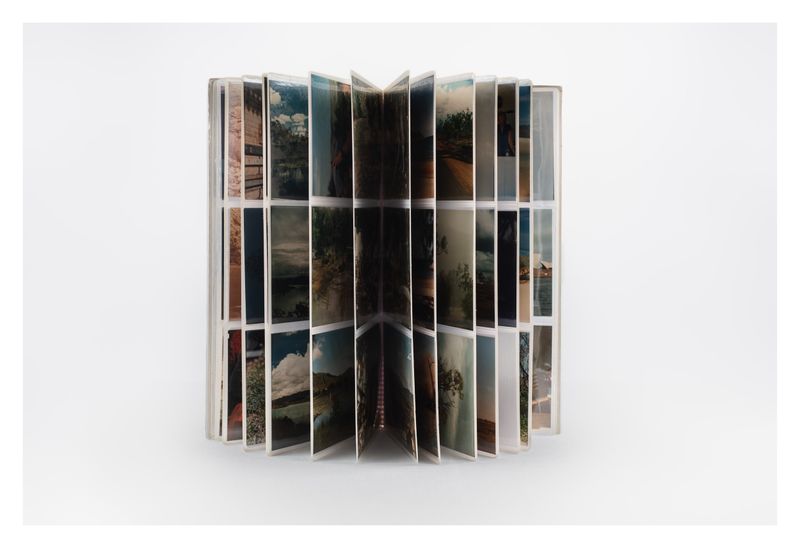
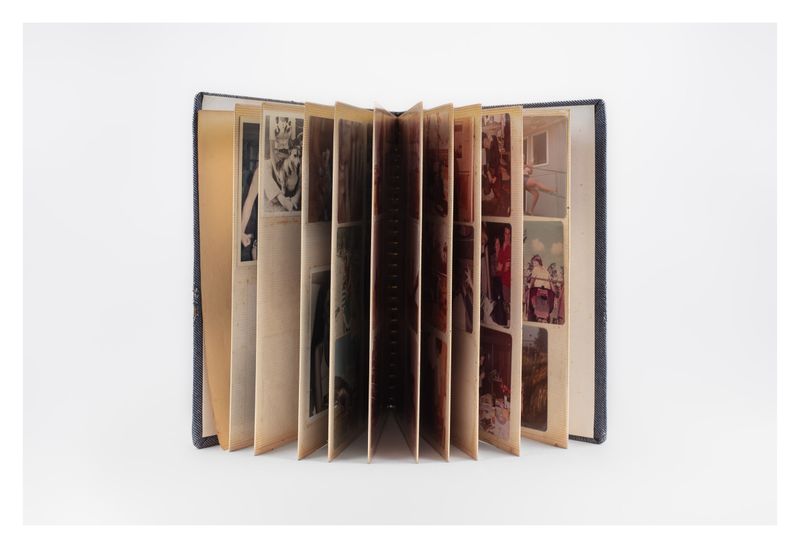
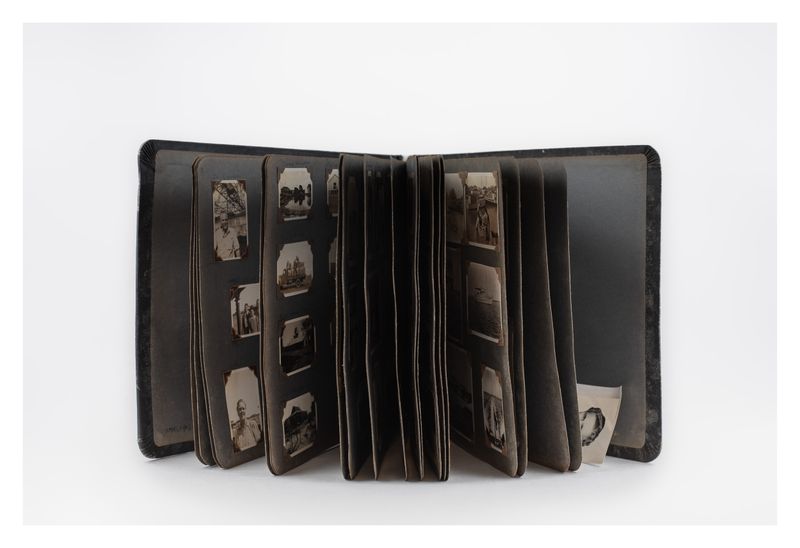
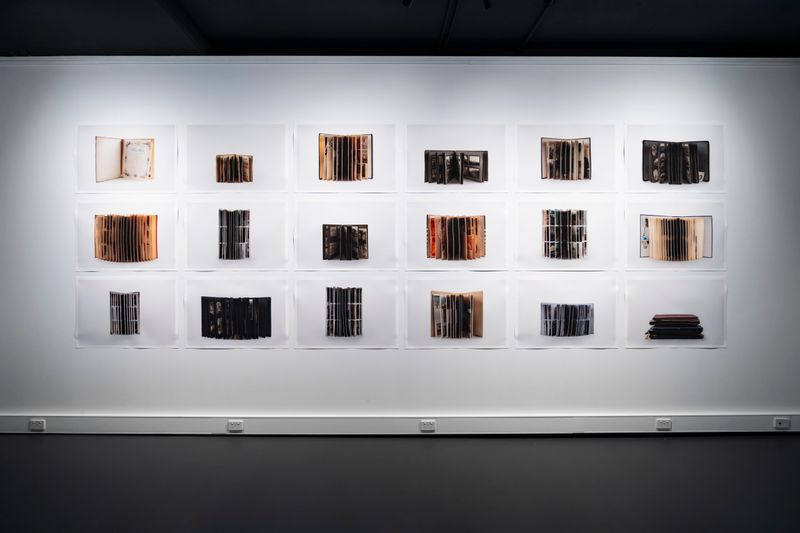
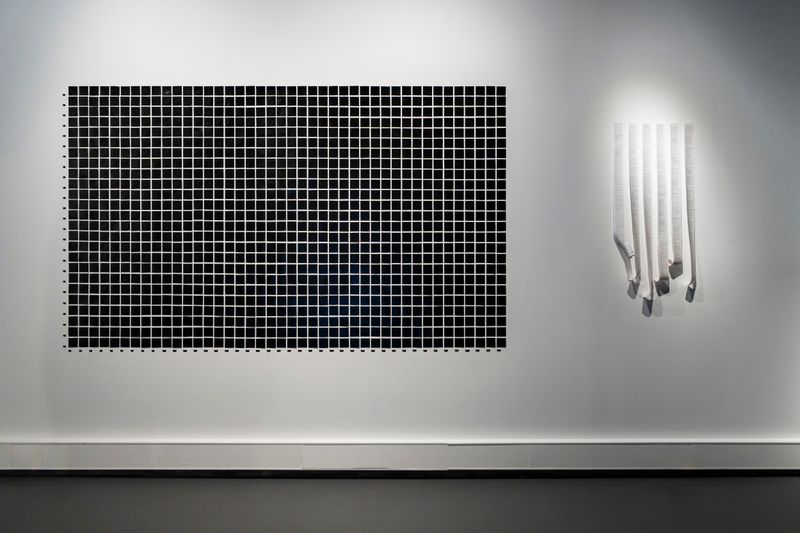
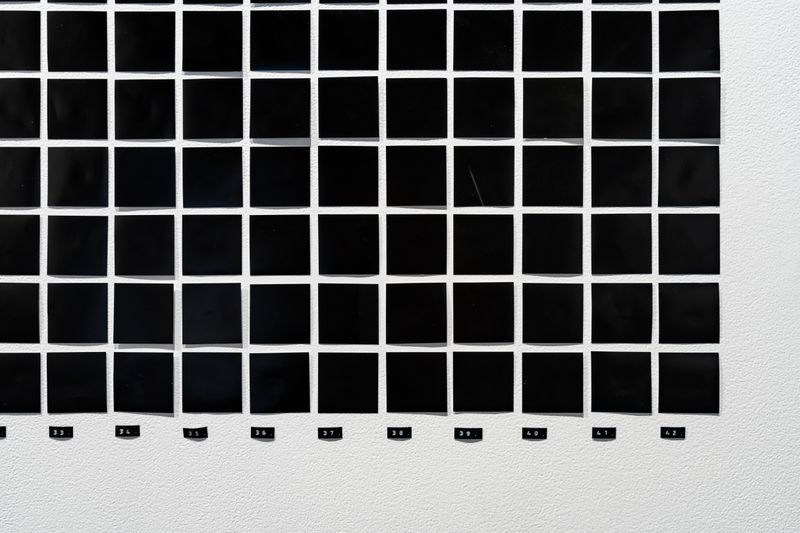
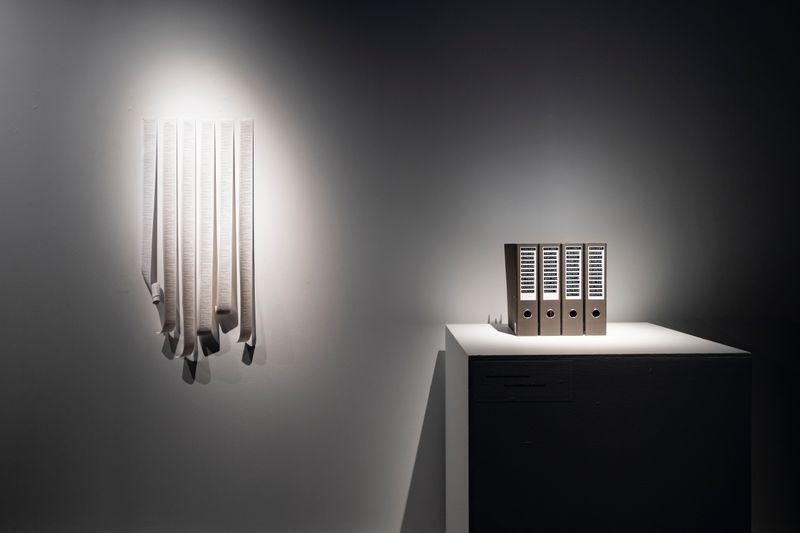
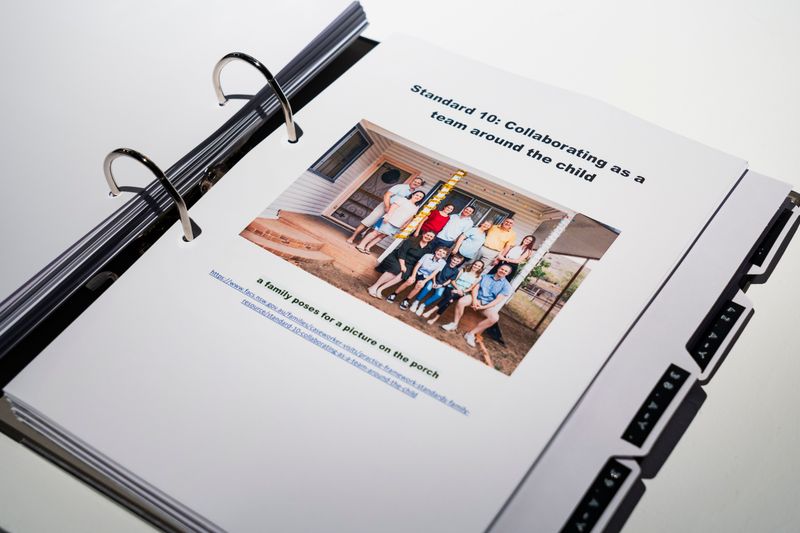

![© Nina White - Inverted detail view of slide #26 from "[are you] Projecting".](https://img.phmuseum.com/eyJidWNrZXQiOiJpbWcucGhtdXNldW0uY29tIiwia2V5IjoidXNlcnMvWGUwWTdLYS9zdWJtaXNzaW9ucy9kUjZ3cVZkL2Jsb2Nrcy9kQnlNMTJiIiwiZWRpdHMiOnsicmVzaXplIjp7ImZpdCI6ImNvdmVyIiwid2lkdGgiOjgwMH19fQ==)
![© Nina White - Inverted detail view of slide #4 from "[are you] Projecting".](https://img.phmuseum.com/eyJidWNrZXQiOiJpbWcucGhtdXNldW0uY29tIiwia2V5IjoidXNlcnMvWGUwWTdLYS9zdWJtaXNzaW9ucy9kUjZ3cVZkL2Jsb2Nrcy9kSlJuRTlkIiwiZWRpdHMiOnsicmVzaXplIjp7ImZpdCI6ImNvdmVyIiwid2lkdGgiOjgwMH19fQ==)
![© Nina White - Installation view of slide projector and constructed slides in "[are you] Projecting".](https://img.phmuseum.com/eyJidWNrZXQiOiJpbWcucGhtdXNldW0uY29tIiwia2V5IjoidXNlcnMvWGUwWTdLYS9zdWJtaXNzaW9ucy9kUjZ3cVZkL2Jsb2Nrcy9heG0wb3piIiwiZWRpdHMiOnsicmVzaXplIjp7ImZpdCI6ImNvdmVyIiwid2lkdGgiOjgwMH19fQ==)
![© Nina White - Installation view of slide projector and constructed slides in "[are you] Projecting "](https://img.phmuseum.com/eyJidWNrZXQiOiJpbWcucGhtdXNldW0uY29tIiwia2V5IjoidXNlcnMvWGUwWTdLYS9zdWJtaXNzaW9ucy9kUjZ3cVZkL2Jsb2Nrcy9kTlJyN21kIiwiZWRpdHMiOnsicmVzaXplIjp7ImZpdCI6ImNvdmVyIiwid2lkdGgiOjgwMH19fQ==)

